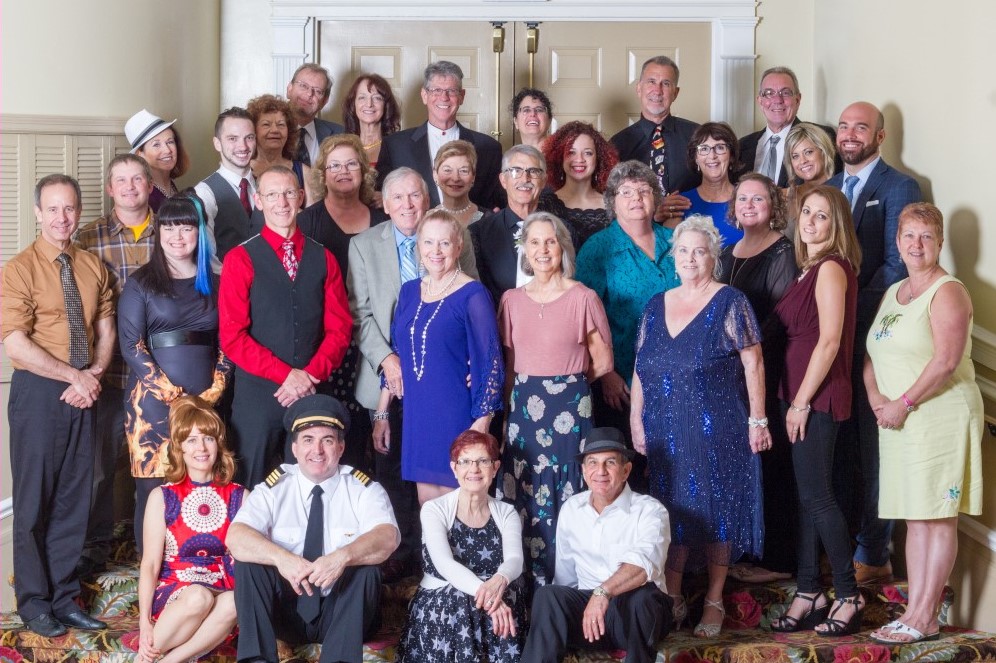Social Dancing of the Nineteenth
Century
Century
After the fall of the
Ancient Regime, a political system established in the Kingdom of France from
the 15th century until the end of the 18th century,
social dancing became more natural and egalitarian. As with clothing, dancing became less
restrictive and elaborate as with the formalities of the Baroque ballrooms.
Ancient Regime, a political system established in the Kingdom of France from
the 15th century until the end of the 18th century,
social dancing became more natural and egalitarian. As with clothing, dancing became less
restrictive and elaborate as with the formalities of the Baroque ballrooms.
Basically, social dancing
of the 19th century can be divided into three eras. Each era had its unique clothing, manners,
music, and dances.
of the 19th century can be divided into three eras. Each era had its unique clothing, manners,
music, and dances.
The Regency era, refers
to the English Prince Regent. This
period of social dancing ran from the 1800s to the 1830s. The most popular dance at this time was the
Quadrille, a dance performed as a square dance usually by four couples. Other dances of this era were the Scotch Reel
and Mazurka, which featured intricate steps.
These dances, done in squares or lines, were joined by individual dance couples. The Waltz had risen from the peasantry to the
assembly rooms of society. At this time,
the Waltz was more talked about than danced.
Society was not quite ready for the closed embrace of the Waltz.
to the English Prince Regent. This
period of social dancing ran from the 1800s to the 1830s. The most popular dance at this time was the
Quadrille, a dance performed as a square dance usually by four couples. Other dances of this era were the Scotch Reel
and Mazurka, which featured intricate steps.
These dances, done in squares or lines, were joined by individual dance couples. The Waltz had risen from the peasantry to the
assembly rooms of society. At this time,
the Waltz was more talked about than danced.
Society was not quite ready for the closed embrace of the Waltz.
The Romantic Era that
followed was from 1840 to the 1860s. The
Waltz was making advancements in the ballroom, aided by performances by notable
society figures. Its inherent
sensuousness was lightened with playful cheerfulness. The Polka from Bohemia became an overnight
hit in society ballrooms in 1844 – it even overtook the Waltz at this time. The Polka’s natural wholesome joy made closed
couple turning acceptable. This caused
people and dancers of this day to want more.
During this time there was an increasing trend toward ease and
naturalness in dancing. This encouraged
the elimination of the complicated steps of the Quadrille and other
dances. Dances were fresh, inventive,
youthful, and daring.
followed was from 1840 to the 1860s. The
Waltz was making advancements in the ballroom, aided by performances by notable
society figures. Its inherent
sensuousness was lightened with playful cheerfulness. The Polka from Bohemia became an overnight
hit in society ballrooms in 1844 – it even overtook the Waltz at this time. The Polka’s natural wholesome joy made closed
couple turning acceptable. This caused
people and dancers of this day to want more.
During this time there was an increasing trend toward ease and
naturalness in dancing. This encouraged
the elimination of the complicated steps of the Quadrille and other
dances. Dances were fresh, inventive,
youthful, and daring.
Social dancing of The
High Victorian Era began in 1870. At
this point, dances were for parents and even grandparents. Slowly, people who wanted to learn the Mazurka,
Schottische, Redowa, and Polka started to fade.
Professional dance organizations started to be formed in attempt to keep
these dances alive, but dancers still found them too restrictive. High Society Balls were giving way to the German
parlor cotillion games, featuring expensive prizes. The middle class public
balls saw a variety of dances reduced to just two: the Waltz and Two-Step. By century’s end,
dancers were ready for more, and who knew that the next wave of dances would
come from America’s lower classes: the Ragtime Era!
High Victorian Era began in 1870. At
this point, dances were for parents and even grandparents. Slowly, people who wanted to learn the Mazurka,
Schottische, Redowa, and Polka started to fade.
Professional dance organizations started to be formed in attempt to keep
these dances alive, but dancers still found them too restrictive. High Society Balls were giving way to the German
parlor cotillion games, featuring expensive prizes. The middle class public
balls saw a variety of dances reduced to just two: the Waltz and Two-Step. By century’s end,
dancers were ready for more, and who knew that the next wave of dances would
come from America’s lower classes: the Ragtime Era!
Richard Sorger
TC Dance Club




